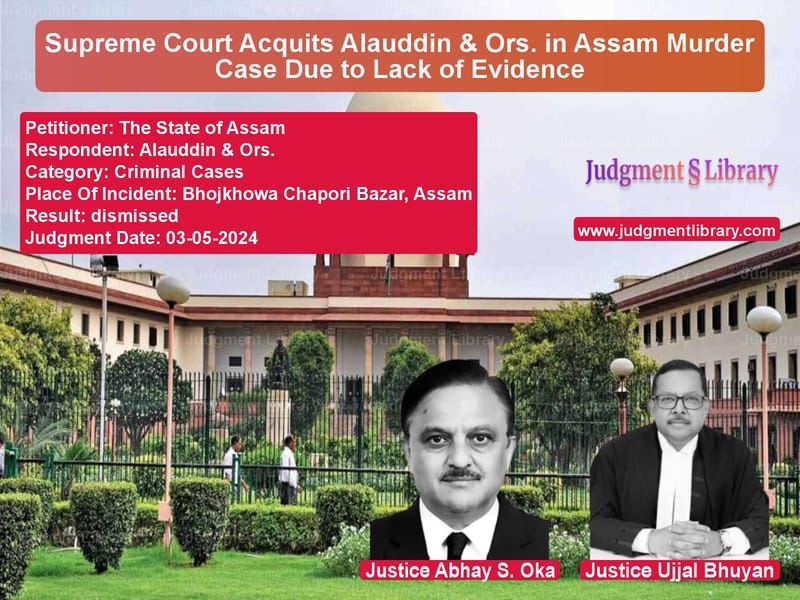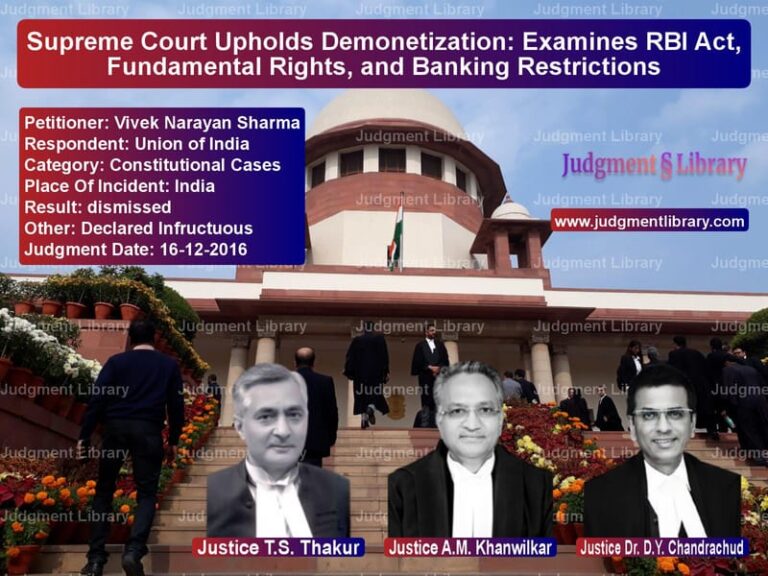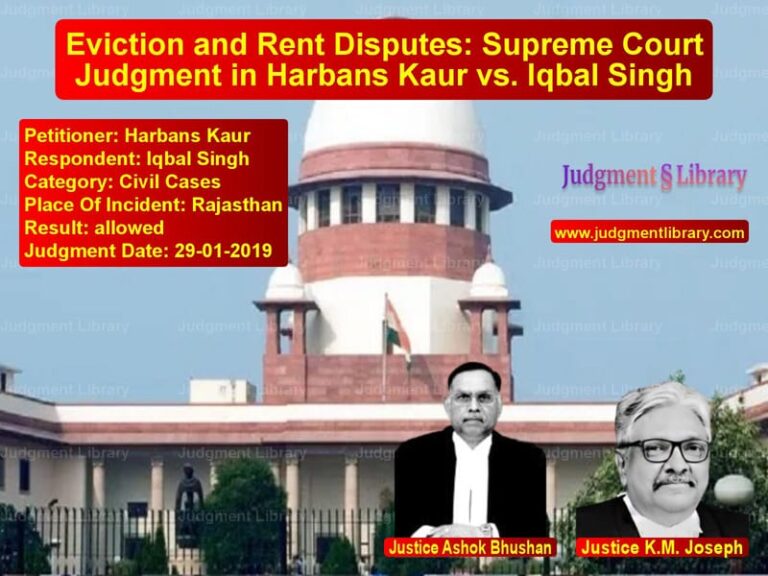Supreme Court Acquits Alauddin & Ors. in Assam Murder Case Due to Lack of Evidence
The Supreme Court of India recently ruled in the case of Alauddin & Ors. v. The State of Assam & Anr., where the appellants were acquitted of murder charges due to insufficient evidence. The case, which involved the killing of Sahabuddin Choudhury on February 3, 2013, was originally decided by the Trial Court, which convicted five out of the eight accused. Upon appeal, the High Court upheld the conviction of four accused but acquitted one. The Supreme Court ultimately overturned the convictions, citing procedural lapses and weak evidence.
Background of the Case
The incident occurred in Bhojkhowa Chapori Bazar, Assam, where the prosecution alleged that the accused picked up the victim from his house at 4:00 p.m. and later murdered him behind L.P. School using sharp weapons. The prosecution presented multiple witnesses who claimed to have seen the accused with the victim before the crime.
The appellants—accused nos. 3, 1, 6, and 7—were charged under Section 302 IPC (Punishment for Murder) read with Section 149 IPC (Unlawful Assembly). However, the Supreme Court found that key aspects of the prosecution’s case were flawed.
Legal Issues in the Case
- Whether the conviction under Section 302 IPC read with Section 149 IPC was sustainable.
- Whether the ‘last seen together’ evidence was reliable.
- Whether the witnesses provided credible and consistent testimony.
- Whether procedural lapses in recording contradictions and omissions affected the trial.
Arguments by the Appellants
The defense raised several arguments to challenge their conviction:
- PW-1 (Md. Akhtar Hussain Choudhury) was declared unreliable by the Trial Court itself, yet his testimony was used to convict the accused.
- PWs 3 and 4, who were supposedly key witnesses, made contradictory statements in court.
- The ‘last seen together’ theory was invalid because the deceased had attended a public meeting after being last seen with the accused.
- PW-6 (wife of the deceased) admitted that her husband had prior disputes with the accused.
The appellants’ counsel highlighted these contradictions, arguing that the prosecution’s case was based on weak and unreliable evidence.
Arguments by the State
The prosecution contended that:
- The accused were last seen with the deceased before he was murdered.
- There was a clear motive for the crime, as the deceased had prior disputes with the accused.
- The testimony of multiple witnesses corroborated the prosecution’s case.
However, the Supreme Court found these arguments insufficient to sustain the conviction.
Supreme Court’s Observations
The Court found multiple inconsistencies in the prosecution’s case:
- The conviction was based on Section 302 IPC read with Section 149 IPC, which requires an unlawful assembly of at least five persons. However, one of the accused had already been acquitted, bringing the total to four—below the required threshold.
- The prosecution’s reliance on the ‘last seen together’ theory was flawed, as the deceased had been with others after being last seen with the accused.
- The Trial Court failed to properly record contradictions and omissions in witness statements as per Section 145 of the Indian Evidence Act.
- The key prosecution witnesses (PWs 3, 4, 5, and 7) provided contradictory statements.
- The circumstantial evidence was incomplete and did not establish guilt beyond a reasonable doubt.
Analysis of Witness Testimonies
PW-1: The Trial Court found that his claim of witnessing the incident was fallacious.
PW-3: He stated that he saw the accused attacking the victim, but his testimony contained contradictions regarding the timeline of events.
PW-4: He claimed to have witnessed the assault but had significant omissions in his statement to the police.
PW-6: The victim’s wife confirmed past disputes between the deceased and the accused, suggesting a possible motive but not providing direct evidence.
The Supreme Court held that these inconsistencies weakened the prosecution’s case beyond repair.
Final Judgment
The Supreme Court ruled:
- The appellants were acquitted of all charges under Section 302 IPC read with Section 149 IPC.
- The prosecution failed to prove guilt beyond a reasonable doubt.
- The appellants were ordered to be released unless they were required in connection with any other case.
Key Judicial Precedents Considered
- Tahsildar Singh v. State of U.P. – Guidelines on contradictions and omissions in witness statements.
- Shyam Singh v. State of Punjab – Procedural requirements for contradicting a witness.
- State of Punjab v. Gurmit Singh – Importance of credible evidence in criminal trials.
Conclusion
This case underscores the importance of procedural fairness and the principle that justice must be based on credible evidence. The Supreme Court’s ruling reaffirms that omissions, contradictions, and procedural lapses can lead to the acquittal of accused individuals, reinforcing the fundamental legal principle that an accused is innocent until proven guilty beyond a reasonable doubt.
Petitioner Name: The State of Assam.Respondent Name: Alauddin & Ors..Judgment By: Justice Abhay S. Oka, Justice Ujjal Bhuyan.Place Of Incident: Bhojkhowa Chapori Bazar, Assam.Judgment Date: 03-05-2024.
Don’t miss out on the full details! Download the complete judgment in PDF format below and gain valuable insights instantly!
Download Judgment: the-state-of-assam-vs-alauddin-&-ors.-supreme-court-of-india-judgment-dated-03-05-2024.pdf
Directly Download Judgment: Directly download this Judgment
See all petitions in Murder Cases
See all petitions in Bail and Anticipatory Bail
See all petitions in Attempt to Murder Cases
See all petitions in Custodial Deaths and Police Misconduct
See all petitions in SC/ST Act Case
See all petitions in Judgment by Abhay S. Oka
See all petitions in Judgment by Ujjal Bhuyan
See all petitions in dismissed
See all petitions in supreme court of India judgments May 2024
See all petitions in 2024 judgments
See all posts in Criminal Cases Category
See all allowed petitions in Criminal Cases Category
See all Dismissed petitions in Criminal Cases Category
See all partially allowed petitions in Criminal Cases Category







